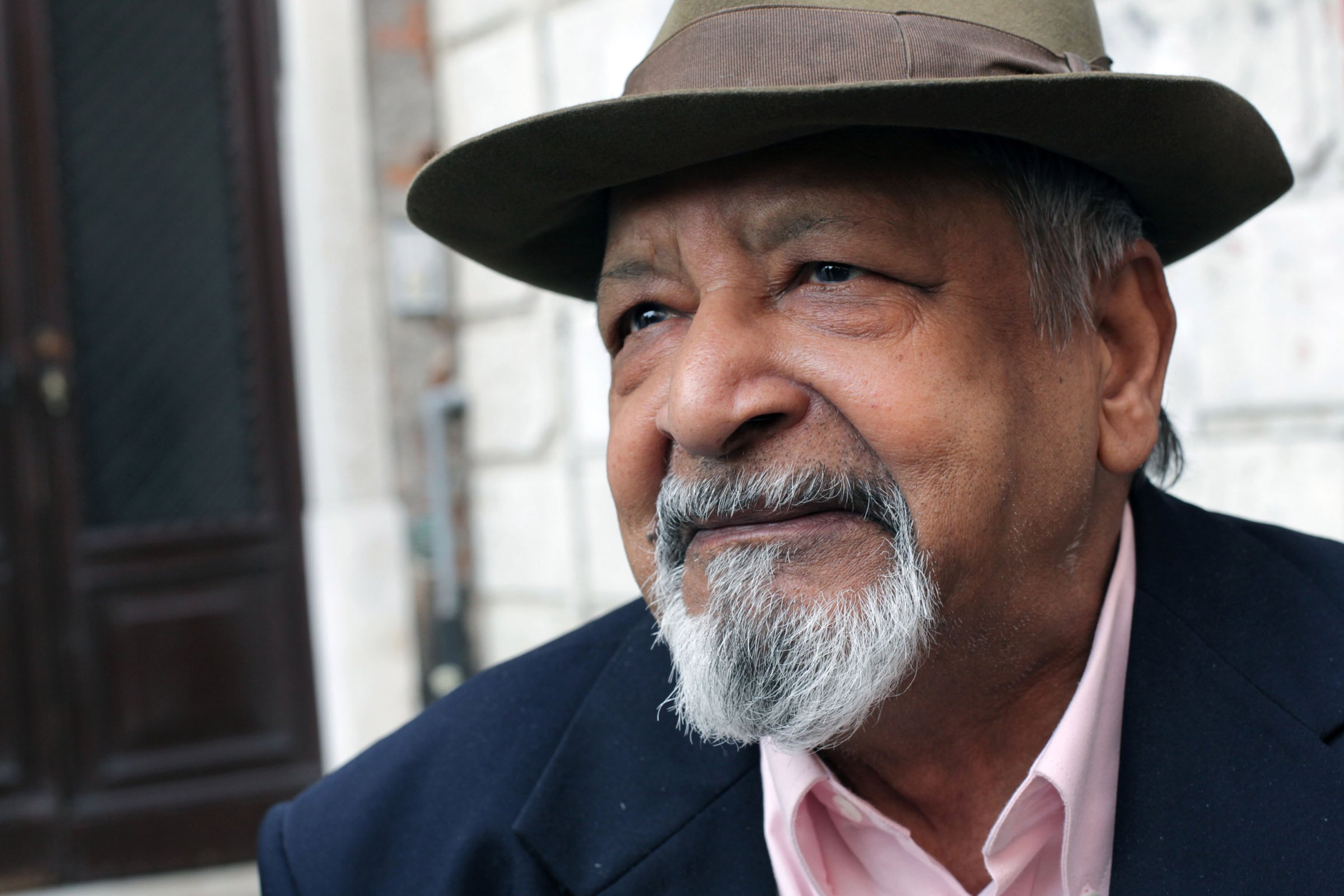
It may once have been taken for granted that writing about the far-flung world—like exploring, subjugating and enslaving huge swaths of it—was a white man’s occupation. When V.S. Naipaul—who died at 85 on Aug. 11—stormed that exclusive literary bastion with his irascible portrayal of life in the former colonies, he irrevocably changed the landscape. As we marvel at his tremendous, formidable body of work in the wake of his passing, we inevitably have to contend with his polarizing, reactionary legacy.
Born on August 17, 1932 in rural Trinidad to Seepersad Naipaul and Droapatie Capildeo, he was the second of seven children. Determined to escape his island birthplace, he won a scholarship to Oxford in 1950 and made England his home for the remainder of his life. In the years that followed he published more than thirty books—novels, essays, memoirs and political travelogues through troubled regions.
Psychiatrist and revolutionary theorist Frantz Fanon wrote that “the first ambition of the colonized” was to resemble the colonizer “to the point of disappearing in him.” This was Naipaul’s multi-act tragedy as he ferociously churned out opinions that bordered on racism. Perhaps in order to gain admittance into the privileged world of Anglophone writing, to slip past the white gatekeepers who dictated the canon, Naipaul had to exemplify grandiose self-loathing—both in his fiction and non-fiction—and inhabit the default state of the colonized subject.
His elegant prose style, coupled with conveniently conservative politics, paid off and won him accolades. From the Booker Prize in 1971 for his novel In A Free State to the Nobel Prize in 2001, he picked up every major literary award. Even his fiercest critics will grudgingly agree that his third novel, A House For Mr Biswas, is a classic; a son tormented by the personal memory of his father’s thwarted ambition produces a covetable masterpiece.
Being the grandson of indentured Indian laborers in the Caribbean, a brown immigrant student in Churchill’s England, Naipaul typified the unwelcome stranger. His alienation reflected itself in the constant smashing of literary structures, an evidence of his own splintered rootlessness. For all of his remorseless disemboweling of form, Naipaul played it ultra-safe with the content of his books. He became an autonomous echo to the oppressive institutions of our time, internalizing the xenophobia and dehumanization that lay at the heart of colonialism.
His prodigious output and his undeniable talent made him aware that the label of genius could let him get away with abusing women from flaunting himself as a “great prostitute man” while still married to his first wife Patricia Hale, and being “very violent” to Margaret Gooding, with whom he had an extra-marital affair for more than two decades.
These cannot be seen as a man’s private life alone. He created female characters who were little more than cardboard caricatures and made lamentable public pronouncements on women writers—ranging from dismissing Jane Austen as “too trivial” to insisting that no women writer was his equal. His books visited upon the “Third World” the same degradation that he thrust upon women. He remained a lifelong naysayer to oppressed people’s autonomy and yearning for selfhood, as we can see from his depressing portrayal of post-independent African nations (A Bend in the River, In a Free State), the Black Power movement in the Caribbean (Guerrillas), the Indian subcontinent (India: A Wounded Civilization, An Area of Darkness, India: A Million Mutinies Now).
He lampooned any land associated with Islam, whether it was his travels in non-Arab Muslim nations portrayed in Among the Believers and Beyond Belief: Islamic Excursions Among the Converted People’s or his pessimistic, dismissive interviews about the Arab Spring. Cynicism is often an inseparable shadow for the writer-novelist, but for Naipaul such disillusionment was not universal. He saw the rise of Hindu militancy as a “creative force” and a “necessary corrective to history”—applauding the demolition of the Babri Masjid, a 16th-century mosque in Ayodhya destroyed by Hindus in 1992, as “an act of historical balancing. He gloated over his own Brahmin ancestry and described the vicious, violent caste system as a “friendly society.”
He was to the colonialist-imperialist project what Ezra Pound was to the fascists and Leni Riefenstahl was to the Third Reich, a brilliant and tormented reactionary artist in the service of unspeakable horror. He was compulsively readable, even in moments when we find ourselves in absolute disagreement with what he had to say.
Naipaul once wrote, “I am free of the emancipatory fire.” That would have been a forgivable sin if he had remained a neutral, cat-on-the-wall intellectual. He did not practice detachment, but its opposite: a pandering to the status quo, a shameless cheerleader for the worst excesses of the West. The subjects that he mined tirelessly, in the hands of a kinder writer would have turned out to become both literature and texts of liberation. Instead, Naipaul’s blinkered, bigoted vision reduced the vast tomes of his work to mirror hate-filled stenography by petty colonial officials blessed with a flourish of language.
In mourning his passing, we must remember to also mourn his immense talent squandered on noisy hostility toward the self-determination and historical struggles of the most vulnerable, broken people. It was, after all, their stories that he artfully plundered in the service of his craft.
More Must-Reads from TIME
- Cybersecurity Experts Are Sounding the Alarm on DOGE
- Meet the 2025 Women of the Year
- The Harsh Truth About Disability Inclusion
- Why Do More Young Adults Have Cancer?
- Colman Domingo Leads With Radical Love
- How to Get Better at Doing Things Alone
- Michelle Zauner Stares Down the Darkness
Contact us at letters@time.com